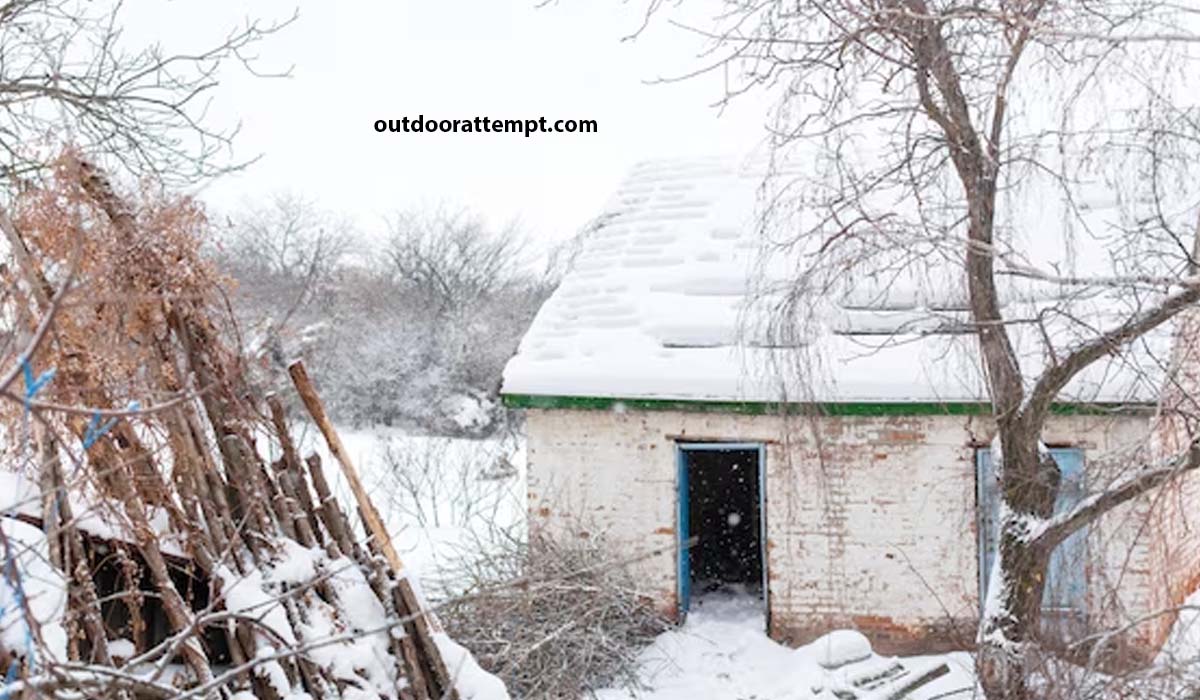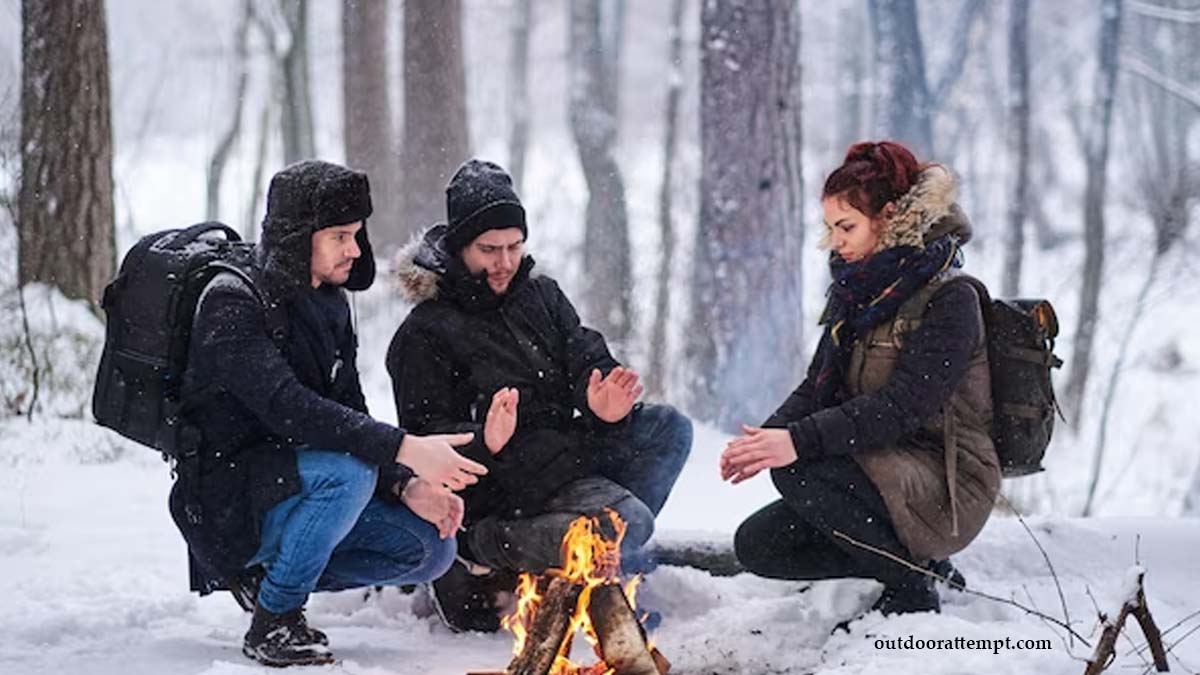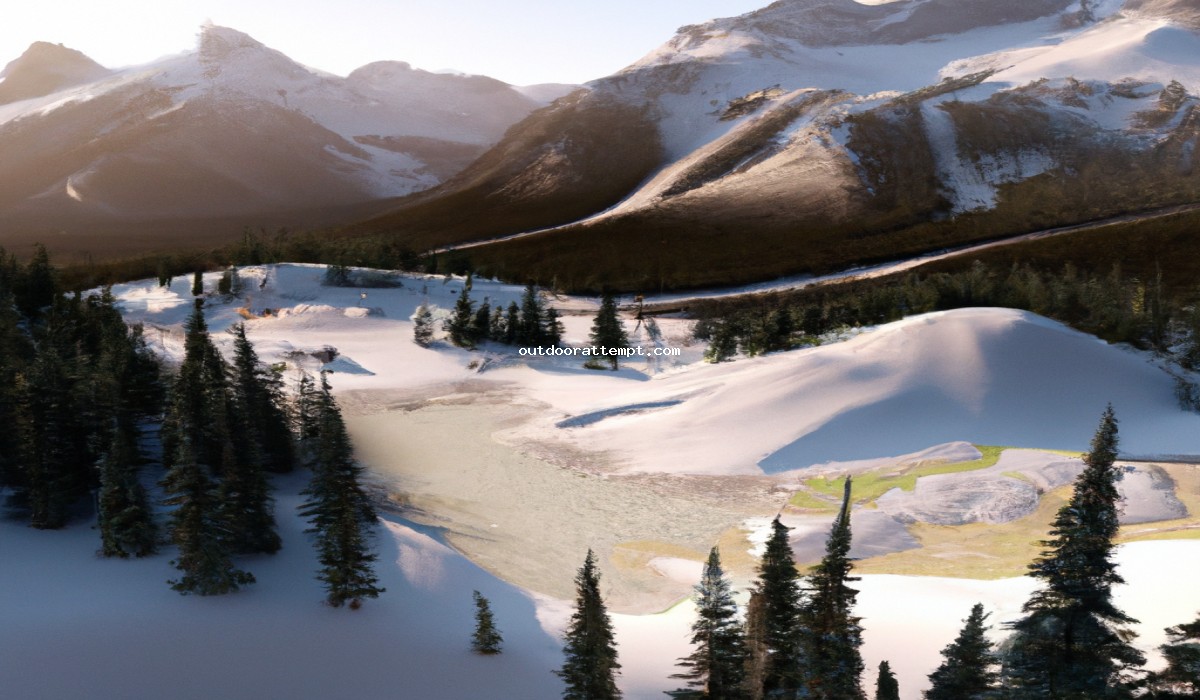Solo Snow Camp Adventure in the High Mountains. In December 2018, I set out on a solo camping trip in the high mountains of Colorado.
Solo Snow Camp Adventure in the High Mountains
My goal was to spend five days camping in the snow, testing my new winter camping gear and honing my skills. The trip was a success, and I survived the elements! Here’s what I learned.
Arriving in the backcountry
After a long day of skinning, I drop my heavy pack on the snow and collapse next to it. It’s already getting dark and I have just enough time to set up my tent before nightfall. I quickly unpack my sleeping bag and Stove and get to work melting snow for dinner. It’s going to be a cold night.
Bundling up
I slip into my sleeping bag fully clothed, with all my extra layers on. It’s so cold that I can see my breath inside the tent. I huddle close to the stove, trying to stay warm. I’m glad I brought my down jacket; I would have frozen to death without it.
Sleeping through the night
I wake up in the middle of the night, shivering uncontrollably. The stove has gone out and the inside of the tent is frigid. I put on all my clothes and curl up into a ball, trying to generate some heat. I’m not sure if I’m going to make it through the night.
Morning comes
I wake up to the sound of blowing snow. It’s still dark and cold inside the tent, but I force myself to get up and start melting snow for breakfast. I have to get moving if I want to make it back to civilization today.
Breaking camp
I pack up my things and start skins up the slope. It’s slow going in the deep snow, but I eventually reach the top of the pass. From there, it’s all downhill. I make good time on the way down, and before long I’m back at the trailhead. So I did it! I survived a night alone in the snow.
History of Snow Camping
The history of snow camping is a long and varied one, dating back centuries to the days when early humans first began to venture into cold, snowy environments. While the specifics of how and why people first began snow camping are lost to history, we do know that it has been a part of human culture for a very long time.
Solo Snow Camp Adventure in the High Mountains
One of the earliest recorded instances of snow camping comes from the journals of Captain James Cook, who spent a winter camped in the Arctic in 1778. Cook and his men were forced to spend several weeks camped on an ice floe, and during that time, they made some rudimentary shelters out of blocks of snow. These early snow camps were likely very uncomfortable, but they served as a proof of concept that people could indeed survive in such a hostile environment.
Since those early days, snow camping has become a popular pastime for people all over the world. In recent years, it has even become something of a trendy vacation destination, with luxury resorts offering all the amenities of a traditional hotel, but with the added bonus of being surrounded by snow-capped mountains.
Solo Snow Camp Adventure in the High Mountains
Whether you’re looking to get away from it all or just want to experience a winter wonderland up close and personal, snow camping is an adventure that is sure to leave you with lasting memories.

Emergency situations often arise unexpectedly and without warning. Being prepared for the worst case scenario is crucial for survival. This means having the right supplies and knowing how to use them. One of the most important things to bring on a solo snow camp adventure is a shelter.
There are many different types of shelters that can be used in a variety of situations. The most important factor to consider when choosing a shelter is the weather conditions. Some shelters are better suited for warm weather, while others are designed for cold weather conditions.
Popular Types of Shelters
One of the most popular types of shelters is the tent. Tents come in a variety of sizes and can be used for both solo and group camping trips. Tents provide a great deal of protection from the elements and can be easily set up and taken down.
Another popular type of shelter is the tarp. Tarps are much lighter than tents and can be used in a variety of situations. So Tarps can be used as a ground cover, a sunshade, or an emergency shelter. Tarps are not as durable as tents and can be damaged by high winds.
Solo Snow Camp Adventure in the High Mountains
The final type of shelter to consider is the bivy sack. Bivy sacks are small, lightweight, and can be used in a variety of situations. Bivy sacks are not as durable as tents and tarps, but they offer a good amount of protection from the elements.
When choosing a shelter for a solo snow camp adventure, it is important to consider the weather conditions and the type of terrain that will be encountered. Tents, tarps, and bivy sacks are all good options for solo campers.
What are the most important Survival skills?
There are many ways to explore and appreciate the beauty of nature. For some, it is enough to take a short hike to a nearby waterfall or enjoy a scenic drive. Others, including myself, feel the need to go further. To really get away from the hustle and bustle of everyday life, I enjoy nothing more than spending a few days alone in the wilderness, completely cut off from the rest of the world.
How can you make a fire in the snow?
One of my favorite places to do this is in the high mountains in the middle of winter. When most people are huddled around their fireplaces trying to stay warm, I am outside enjoying the snow and the peace that comes with being in such a remote place.
However, there are certain challenges that come with solo winter camping. In this article, I will share some of my personal experiences and tips for overcoming these challenges so that you can enjoy your own solo winter adventure.
What is the most effective way to stay warm in the cold?
One of the most important things to consider when planning a solo winter camping trip is your safety. The mountains are a beautiful but dangerous place, and you need to be prepared for the worst.
Before you even start packing your gear, you need to make sure you have the proper clothing and equipment. This includes things like a warm sleeping bag, proper hiking boots, and a good tent.
How can you purify water in the wilderness?
You also need to be aware of the potential hazards in the area you will be camping. Avalanches, for example, are a very real danger in the mountains. Make sure you know how to identify the signs of an avalanche and what to do if one occurs.
Another safety consideration is the weather. You need to be aware of the forecast and plan accordingly. If a storm is expected, you may need to change your plans or even abort your trip altogether.
What should you do if you get lost in the wilderness?
Once you have taken care of the safety concerns, you can start planning your route. If you are new to backpacking, it is best to stick to established trails.

If you are experienced, you may want to venture off the beaten path and explore some of the more remote areas. Either way, make sure you have a good map and compass and know how to use them.
How can you find food in the wilderness?
When you are out on the trail, one of the most important things to remember is to leave no trace. This means packing out all of your trash, not cutting live trees, and doing your best to minimize your impact on the environment.
Another thing to keep in mind is that you are likely to encounter wildlife. Be bear aware and make sure you know what to do if you encounter a dangerous animal.
How can you build a shelter in the wilderness?
One of the best things about solo camping is that you can go at your own pace and make your own schedule. If you want to spend all day hiking, you can. If you want to spend the day lounging around your campsite, that is fine too.
What are some common hazards in the wilderness?
One thing to keep in mind, however, is that you will need to allocate enough time to set up camp and take care of your gear. This is especially true in the winter when everything takes longer due to the cold weather.
Another thing to consider is your food. When you are solo camping, you will need to bring enough food for the entire trip. This means planning ahead and packing enough snacks and meals to last you the entire time.
What are some tips for avoiding accidents in the wilderness?
Finally, solo camping can be a bit lonely. If you are the type of person who enjoys being around others, you may want to consider bringing a book or some other form of entertainment.
Solo camping is a great way to get away from the hustle and bustle of everyday life and connect with nature. By following the tips in this article, you can overcome the challenges and enjoy your own solo winter adventure.
The Bottom Line
Solo winter camping can be a great way to get away from it all and connect with nature. However, there are certain challenges that come with it. By following the tips in this article, you can overcome these challenges and enjoy your own solo winter adventure.
